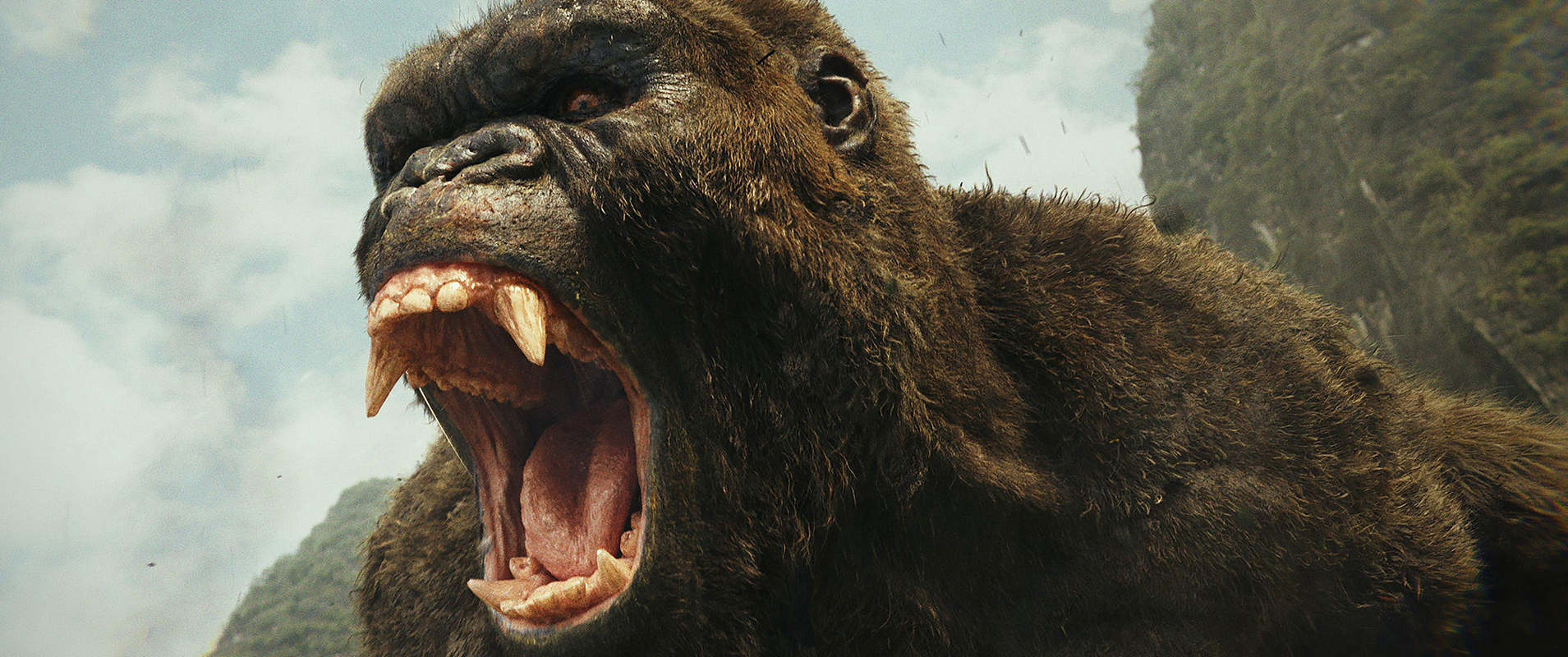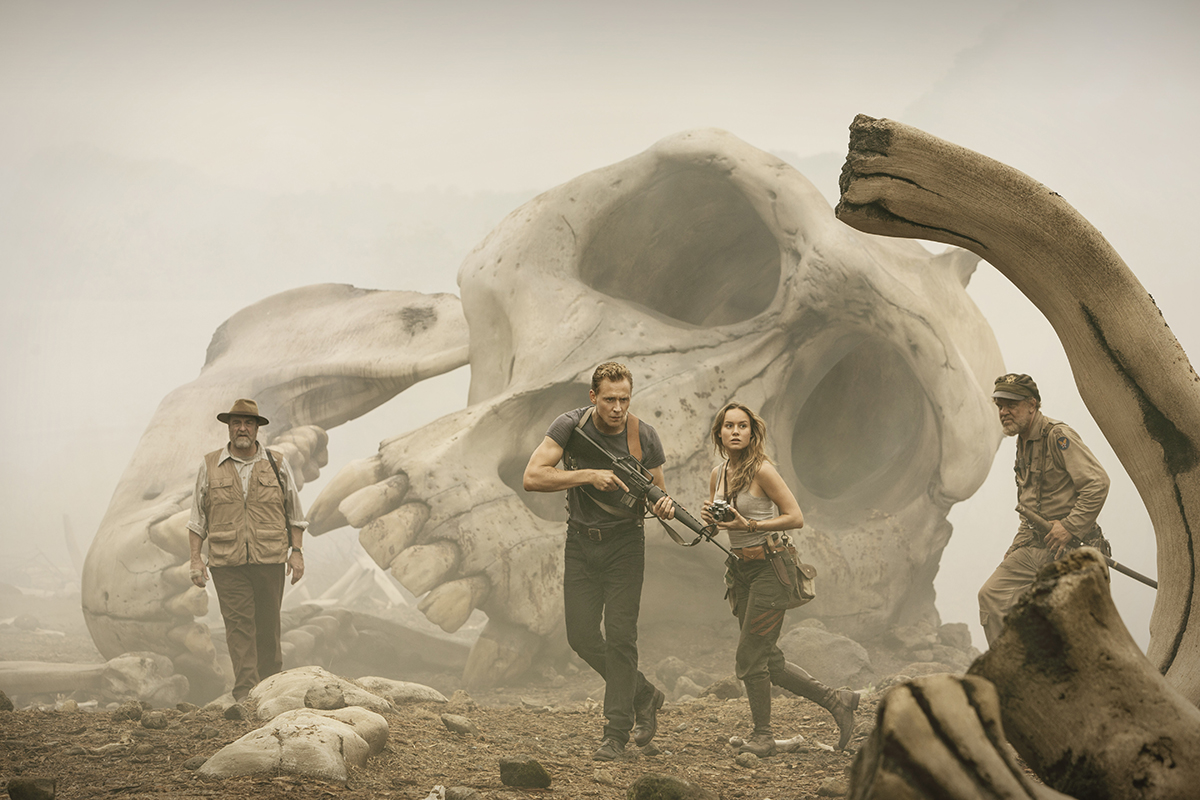Still King: Why Kong Dwarfs Today's Beasts

King Kong is back.
The famed film ape stomped back into theaters Friday (March 10) in the movie "Kong: Skull Island." The film explores the massive beast's origin story on the uncharted and mysterious island that he inhabits, along with a variety of other oversize and dangerous creatures.
The newest incarnation of the gigantic primate towers over his predecessors, director Jordan Vogt-Roberts told The Hollywood Reporter in June 2016, claiming that his Kong was "not [a] 10-foot or 30-foot, but a 100-foot ape." [Video: Giant Ape King Kong Reigns in "Kong: Skull Island"]
Some land animals were once as large as Kong, or even bigger, but they are long extinct. And many animals alive today, such as wolves, bears, big cats and even primates, are significantly smaller than their extinct relatives that lived long ago. What enables animals to reach spectacular sizes, and why can't today's creatures achieve Kong-like stature?
Blue whales are the only modern animals that come close to matching Kong's great size, with adult whales measuring up to 100 feet (31 meters) long. But millions of years ago, creatures that were even larger walked the Earth — such as the dinosaur called Argentinosaurus, which measured about 140 feet (46.7 m) from nose to tail tip. The Argentinosaurus belonged to a dinosaur group known as sauropods, long-necked plant-eaters that lived 136 million to 66 million years ago and that represent the biggest land animals that ever lived.

Land mammals, however, have never quite managed to get as big as dinosaurs did. The largest land mammal of all time — a rhino-like herbivore called Indricotherium that lived between 34 million and 23 million years ago — stood only about 16 feet (5 m) tall. The biggest known primate — the hulking Gigantopithecus, which went extinct 100,000 years ago — barely cleared 10 feet (3 m) in height.
Different metabolic strategies could explain why mammals lagged where dinosaurs enlarged, said John Flynn, Frick Curator of Fossil Mammals in the Division of Paleontology at the American Museum of Natural History in New York City. [In Images: How King Kong Measures Up]
Get the world’s most fascinating discoveries delivered straight to your inbox.
"Because they're warm-blooded, mammals have very high energetic needs," Flynn told Live Science. And the bigger the animal, the more costly it becomes to fuel that warm-blooded engine, he said.
"When you get to be [the] size of an elephant or an Indricotherium, you must find mechanisms to be incredibly efficient for extracting energy from the food that you get. Or you have to eat incredibly high-energy food, or you have to be eating all the time — or both," he said.
The island rule
The long and short of it is that a number of ecological factors help determine whether a species follows an evolutionary path to enormous size, said Mark Lomolino, a professor at the State University of New York College of Environmental Science and Forestry, and author of a study on the body-size evolution of island vertebrates, published in 2005 in the Journal of Biogeography.
"Body size determines how much you need to eat and how you can dominate other species in competition for resources. In mainland systems, species increase or decrease in body size to fill different niches," Lomolino told Live Science.
But on islands, the rules are different. There are usually fewer mammals than on the mainland, and that removes some of the forces that drive species to diversify, he said. However, a pattern called "the island rule" also emerges: Big animals tend to get smaller, and small animals tend to get bigger, Lomolino said. [The World's Biggest Beasts: Here and Gone (Photos)]
Animals on the fictional Skull Island, however, apparently ignored the island rule, as a primate that closely resembles a gorilla somehow evolved to be 100 feet tall.

Farewell to the giants
Many large mammals that are alive today have extinct relatives that were supersized — though not quite Kong size.
In the Northern Hemisphere during the last ice age, large mammal species like mastodons, mammoths, dire wolves, giant bears and saber-toothed cats all grew to be larger than their modern cousins. Many of those ancient beasts disappeared during what is known as the Quaternary extinction event, which occurred about 12,000 years ago, at the end of the Pleistocene epoch.
Dramatic climate change was a factor, but the arrival of humans played an even bigger role in big mammals' decline and eventual extinction, researchers explained in a study published in 2014 in the journal Proceedings of the Royal Society B.
"They couldn't handle the new predator turning up," study lead author Chris Sandom, a lecturer in biology at the University of Sussex in the United Kingdom, told Live Science in 2014.
And in a world increasingly shaped by human activity, the biggest wild animals alive today face an uncertain future. In fact, most of Earth's largest creatures — about 59 percent of carnivores and 60 percent of herbivores — could be extinct by 2100, conservation biologists warned in a study published in July 2016 in the journal BioScience.
The researchers outlined steps that could halt or slow destructive practices threatening big animals, such as rhinos, gorillas and tigers. But unless action is taken — and quickly — the planet could face a future in which any kind of large wildlife seems as fantastic as the great beast King Kong, and can only be glimpsed in movies.
Original article on Live Science.

Mindy Weisberger is an editor at Scholastic and a former Live Science channel editor and senior writer. She has reported on general science, covering climate change, paleontology, biology and space. Mindy studied film at Columbia University; prior to Live Science she produced, wrote and directed media for the American Museum of Natural History in New York City. Her videos about dinosaurs, astrophysics, biodiversity and evolution appear in museums and science centers worldwide, earning awards such as the CINE Golden Eagle and the Communicator Award of Excellence. Her writing has also appeared in Scientific American, The Washington Post and How It Works. She is the author of the book "Rise of the Zombie Bugs: The Surprising Science of Parasitic Mind Control," published by Hopkins Press.
